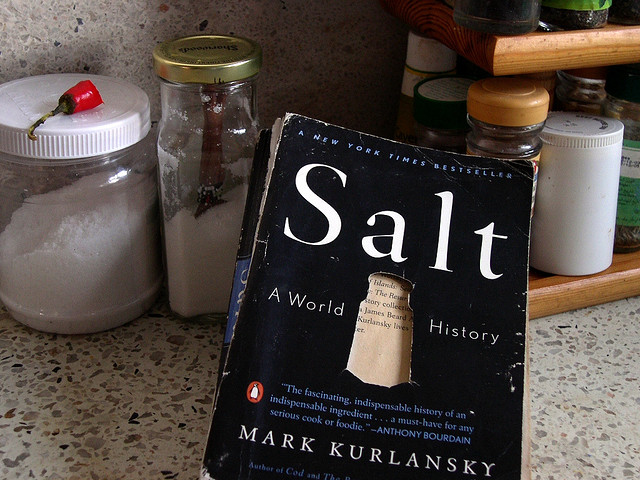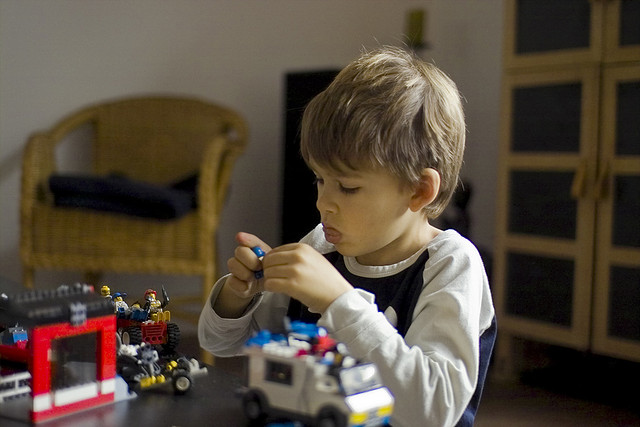Unlock the Magic in Your Story Now
Get the Free 20 questions to Ask Before Launching Your Idea workbook when you sign up for occasional updates.
Get the Free 20 questions to Ask Before Launching Your Idea workbook when you sign up for occasional updates.
Articles filed in: Marketing
Why We Advertise
 Ad spending is set to increase this year. And yet, some of the smartest and fastest growing companies on the planet elect to grow their businesses through word of mouth, by delighting their customers. So, why do we still buy banner ads? Is it because……?
Ad spending is set to increase this year. And yet, some of the smartest and fastest growing companies on the planet elect to grow their businesses through word of mouth, by delighting their customers. So, why do we still buy banner ads? Is it because……?
1. Our products and services don’t create difference for our customers.
2. We don’t spend enough time working out how to fulfil that tiny gap in human desire.
3. We want to raise awareness and stay top of mind.
4. We have the budget.
5. We think it’s easier than working out how to give people something to talk about.
6. Our competitors do it.
7. We’ve made something for everyone.
8. We confuse awareness with impact.
9. We’re afraid.
10. Or worst of all, we believe advertising is a shortcut to mattering to customers.
What if instead of spending all that time and money working out how to tell customers who we are, we spent more time and money being who they want us to be?
Image by Justin Brown.
Why Attention Is No Longer Our Scarcest Resource
 If you want to capture someone’s attention you’ve got about ten seconds to convince them that you are the one. Attention spans are shrinking. People have so many demands, diversions and distractions right there in their pockets every minute of every day that it’s getting harder and harder to hold them. This is the reason that whole industries still exist to find ways to capture attention. But what if attention isn’t actually the scarcest resource?
If you want to capture someone’s attention you’ve got about ten seconds to convince them that you are the one. Attention spans are shrinking. People have so many demands, diversions and distractions right there in their pockets every minute of every day that it’s getting harder and harder to hold them. This is the reason that whole industries still exist to find ways to capture attention. But what if attention isn’t actually the scarcest resource?
When a new cafe opens in your neighbourhood you’ll give it a try, but that initial visit is no guarantee that you’ll keep going back. You might buy pizza when they are selling 2 for 1 on a slow Tuesday night, but that doesn’t mean the store owner has done enough to see you there on a Friday. Headlines designed to bring as many strangers to your blog as possible this week, might not make for a community of evangelists in the long run.
There’s something that’s harder to cultivate than attention. Something that there is no formula for getting. Something that can’t be captured, but has to be nurtured instead. That thing is connection and belonging.
It turns out that when we build our businesses around a single shot at getting someone’s attention for a short term gain today, we’re wasting an opportunity to build a business that endures. The smart brands of the new millennium have thrived on this notion of building for belonging. The Apples, Starbucks’ and the Airbnbs of the world understand that they are playing a long game. They understand that the conversation isn’t over after the first interaction, and they find ways to bake the chances of another connection into their company’s infrastructure and DNA.
That’s all very well for big corporations you might say, we just don’t have the resources to do that kind of thing and time is not on our side. We need eyeballs and bums on seats today!
I know, I know—I really do, but it’s more important to create deeper connections with the right people to make your business sustainable.
Once when I was visiting a new city I did a scout around for a place that sold good coffee—usually the one that isn’t on the main street, the place where you see the locals hanging out. I took a chance, had a great experience and was on my way. The next day I thought, why mess with success and headed back to the same cafe. The guy who took my order the day before asked if I’d like a…. and he rattled off my non-standard coffee order from the day before. Boom, a shot of oxytocin and a feeling of instant connection and belonging. I don’t know how this guy ended up being ‘that guy who remembered people by their coffee orders’, but I bet his boss is glad that he did.
You’ve got to find a way to be ‘that guy’ for the people you want to serve. The one who is patient enough to take the time to make them feel like they belong. If you’re in this for the long haul you don’t need the shortcuts that you’re hoping will magically deliver more people to your door today.
Image by Donna.
Is Getting More Blog Traffic Really Your Goal?
 As traditional marketing (read advertising) becomes less and less effective businesses are turning to content marketing. The metric of many content marketers, as it was of advertisers is still more. How can I get more traffic to my blog? How can we turn our unique visitors into pageviews?
As traditional marketing (read advertising) becomes less and less effective businesses are turning to content marketing. The metric of many content marketers, as it was of advertisers is still more. How can I get more traffic to my blog? How can we turn our unique visitors into pageviews?
How can we get more Facebook likes, tweets and pins? But more doesn’t tell the whole story.
More doesn’t tell how your post changed someone.
More isn’t always how you create the most difference.
More is not the shortcut to mattering.
Viewing your blog or business purely through a data lens is like assessing the development of a child by simply looking at a growth chart.
What would happen if we stopped obsessing about how to make our content king and made people king instead? I think the message on the little guy’s t-shirt in the photo says it all.
Image by Jennifer Lamb.
Hope Is Not A Marketing Strategy
 There’s a tiny market in Potts Point every Sunday. Each week the stallholders show up and hope. They hope that someone who might be their customer will show up too. The stallholders sell things that a passer-by might want, usually things that they could get somewhere else if they weren’t going to buy it on impulse between 8am and 4pm on a lazy Sunday.
There’s a tiny market in Potts Point every Sunday. Each week the stallholders show up and hope. They hope that someone who might be their customer will show up too. The stallholders sell things that a passer-by might want, usually things that they could get somewhere else if they weren’t going to buy it on impulse between 8am and 4pm on a lazy Sunday.
The guy selling jewellery made from LEGO has a different strategy. He understands the worldview of the grandmas who come to buy LEGO earrings and necklaces. They don’t want to look more stylish or glamorous, they want to feel more connected to their grandchildren. A LEGO earring-wearing grandma definitely has a cool factor.
The earring maker knows his customers and what makes them tick before he sets up his stall, and he creates things just for them. It turns out that understanding your customers is a better strategy than hope.
Image by Becca Nelson.
Do It Like You Mean It
 I’m not sure if it was the fact that she was reading a hardback book that made me notice the woman at the back of the cafe. When was the last time you saw someone reading a hardback book? When I asked her what she was reading, she flipped it over. Self help—2014 was going to be “her year”.
I’m not sure if it was the fact that she was reading a hardback book that made me notice the woman at the back of the cafe. When was the last time you saw someone reading a hardback book? When I asked her what she was reading, she flipped it over. Self help—2014 was going to be “her year”.
We chatted while we waited for the coffees to arrive. She wanted to do something that mattered and to write. We got talking about blogging and platforms and self-hosted WordPress. She wondered about the cost of getting up and running on her own .com, and then without even realising it she signaled her intention for her project and for herself.
“Sounds like that would be a good investment if you’re serious about it.”
What alternative is there? If you’re not serious what’s the point of starting?
Every day you’re crafting your intention for your business. That intention is felt in even the tiniest detail and the story you tell yourself is perhaps the most important story of all.
Be serious. Intend to succeed.
Do it like you mean it.
Image by Emyan.
 If you’ve ever doubted that we are, as Jill Bolte Taylor says, “feeling creatures who think” just stop in the salt section of your local supermarket. Salt is as close to free as any product can get. You can buy a kilo for a dollar, or a Pink Himalayan variety for sixty times that price.
If you’ve ever doubted that we are, as Jill Bolte Taylor says, “feeling creatures who think” just stop in the salt section of your local supermarket. Salt is as close to free as any product can get. You can buy a kilo for a dollar, or a Pink Himalayan variety for sixty times that price. It’s 9pm on Sunday night and a line of eager customers with cash in hand snakes down Victoria Street and around the corner. Not one customer who joins is surprised by the line and nobody gives up and leaves it. The effort it seems is clearly worth the reward.
It’s 9pm on Sunday night and a line of eager customers with cash in hand snakes down Victoria Street and around the corner. Not one customer who joins is surprised by the line and nobody gives up and leaves it. The effort it seems is clearly worth the reward. …..they shop to dream. They don’t want stuff. They want to imagine a better version of themselves.
…..they shop to dream. They don’t want stuff. They want to imagine a better version of themselves. There’s no denying it
There’s no denying it  LEGO® bricks are the best in the world. Competitors have tried to copy them over the years, but nothing comes close to a real LEGO® brick. So what’s the secret?
LEGO® bricks are the best in the world. Competitors have tried to copy them over the years, but nothing comes close to a real LEGO® brick. So what’s the secret?